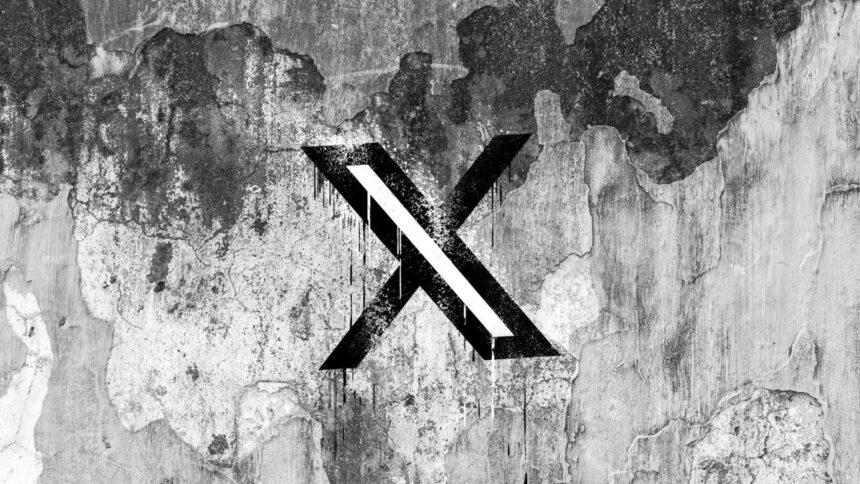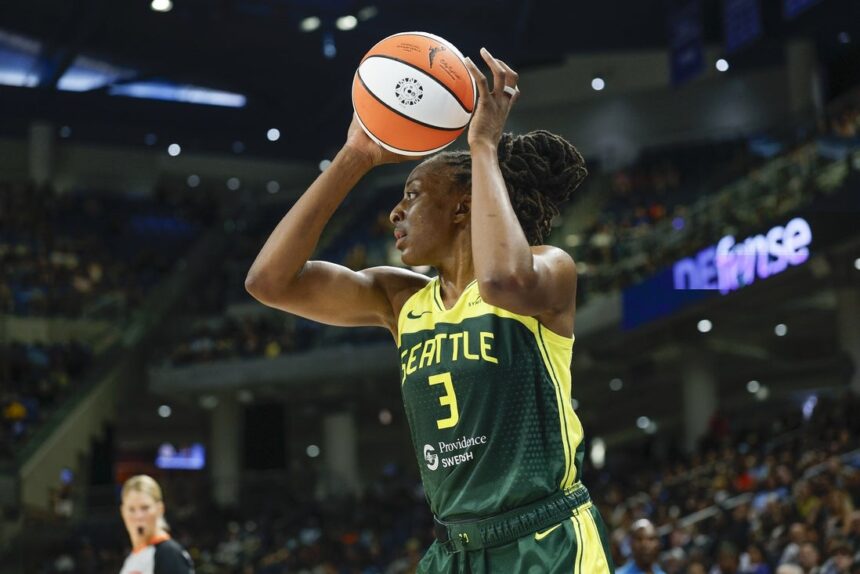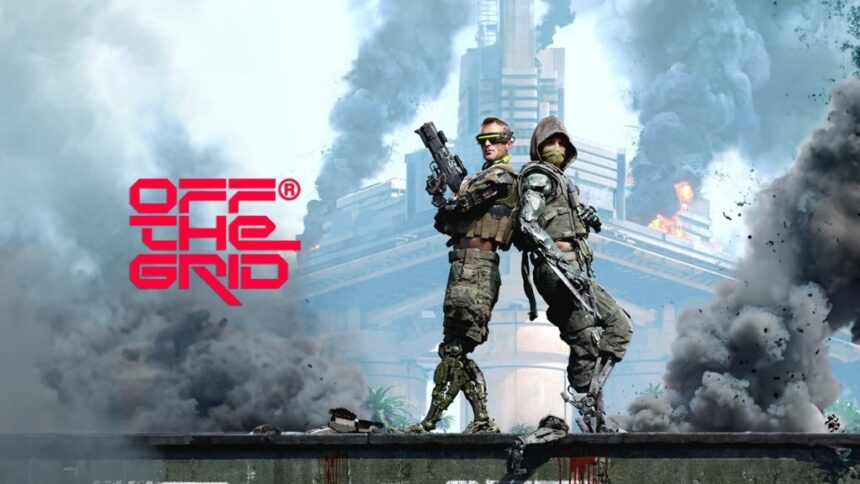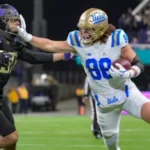Gunzilla is launching its $GUN token on Binance as a way for its Off the Grid battle royale game community to trade their gaming items.
The move is part of Gunzilla‘s dream of making Off the Grid, a hybrid Web2 and Web3 game, into the first mainstream success for Web3 gaming. (Gunzilla made headlines last week by buying Game Informer and reviving the game journalism site that was shut down last year by GameStop).
Theo Agranat, director of Web3 at Gunzilla, said in an interview with GamesBeat that the $GUN token will be used to access the GUNZ platform, which offers blockchain-native infrastructure for game developers. The $GUN token has other utility as well, such as purchasing in-game items from the in-game marketplace, paying for customization items and expendables, and covering Hex decoding fees (which we’ll describe below). Players can earn the $GUN tokens in the game or buy them.
Gunzilla’s Off the Grid game has generated more than 14.5 million wallets to date on Avalanche and it has an estimated 500,000 daily active users. It has had 431 million transactions, with two million to three million transactions happening daily.
So far, all of that has been happening in what Web3 gaming companies call the testnet. Now the mainnet is ready to launch. By adding Binance’s Web3 network, Gunzilla hopes to reach a lot more gamers. The game is available on the Epic Games Store, not on Steam, as Valve has a ban on Web3 games.
The GUNZ ecosystem will be the first Avalanche L1 integrating with Binance, and the $GUN token will be the first Web3 gaming token to launch on Binance since Pixels debuted in the first quarter of 2024.
Off the Grid is also the first Web3 game to get on consoles (PlayStation 5 and Xbox Series X/S) and to get major streamers involved (Timthetatman, Shroud, etc).
The current number of daily active users is below the spike of 900,000 daily active users, which was high in part because Gunzilla brought in influencers like Ninja to play the game for a limited time. It dropped to around 400,000 players and then started climbing back up again.
“We fully expected a drop off to happen. And we also know that we have only 20% of the game live, and it’s early access, so we’re just going to continue building,” Agranat said.
“We feel that we have been able to become the largest Web3 triple-A gaming ecosystem in the world, and we’ve launched the biggest Web3 gaming project that has ever existed and that has been adopted by mainstream,” Agranat said. “We launched a game where we have mainstream gamers commenting that they’re playing exclusively Off the Grid. And so we felt that the correct thing was to build enough to launch on the leading exchange in the world, which is Binance, with [250 million users].”
Off the Grid debuted in October 2024 in early access. While it has Web3 features players can opt into, non-Web3 players can choose to play the title as a free-to-play game where they don’t have to engage in Web3 features at all.
The GUNZ platform is made for game developers, eliminating the need to make deep investments in custom blockchain architecture. It offers easy to integrate SDKs, enabling any studio to launch community-driven Web3 economies.
The ecosystem’s blockchain wallet, companion app, non-fungible token (NFT) marketplace, NFT minting engine are available on the Avalanche blockchain. The company plans to white label these tools for other projects to onboard their gaming intellectual property to Gunzilla’s platform.
Gameplay
The game is set in a dystopian sci-fi future crafted by Neill Blomkamp, creative director for Off the Grid and the creator of films like District 9, Elysium and Chappie. Also contributing is Richard K. Morgan, known for the Netflix series Altered Carbon.
In this future, the battle royale participants are enticed to fight each other for their lives on an island where the survivor gets $100 million. Before they join, their limbs are sawed off in surgery and they’re replaced by cybernetic limbs. If they are killed in battle, they can be revived to fight another day through futuristic medical procedures.
Blomkamp and Gunzilla rounded up a crew of gaming veterans to focus on a triple-A experience. And so far, Agranat said that only 20% of the game has been rolled out for early-access players.
Players start out in a three-play squad. Quite often the players are coming from other hardcore battle royale games like Apex Legends and Call of Duty: Warzone.
“We are very happy with the current performance that we’ve had in terms of onboarding, which has led to a steady increase of our user base. With every update, we’ve had an increase in retention and conversion rates,” Agranat said.
For example, the latest update that Gunzilla launched made it easier for beginners to play against AI non-player characters, resulting in a 35% retention rate for the second game. In many other games, beginners are killed quickly, and they get frustrated. Over time, other improvements will include ranked mode and skill-based matchmaking and other tools to make sure that players, while still being challenged, have a rewarding experience, Agranat said.
The Web3 angle
In a gaming session, players move into the environment and find a Hex Cube, which they can carry around on a belt until they find an extractor. Once they put the cube into the extractor, they have to defend the site while others can attack them to stop the extraction and steal the Hex Cube.
If they succeed with the extraction, whether they win or lose the game, they will get the Hex Cube in their inventory system after the game. They click to decode the Hex Cube, pay a small transaction fee (the gas fee, or cost of doing the transaction on the blockchain) and then get the actual in-game item.
That item could be a cyber limb or a weapon or an attachment. They can also get cosmetic items or skins. If they don’t need those items, they can list them on the marketplace and sell it to someone else. Agranat said this is the real difference between Web2 and Web3. In Web2 games, you can’t resell the item for real money. The price players get for selling Web3 items depends on the rarity of the items. One unique item — a one-of-a-kind rarity — could sell for $2 million. But many more items are stand, such as guns that might sell for $5.
As the real $GUN token launches, Gunzilla will burn the testnet tokens. However, the items that were minted — millions upon millions of items that people own and traded or bought — will be migrated from the testnet to the mainnet. Players will eventually be able to take items out of the game and sell them on OpenSea.
“People will retain all of the items that they’ve worked hard for, and they can resell those as they wish,” Agranat said.
On Monday, the $GUN token is launching on the Binance exchange. Players will be able to use Ethereum to pay to complete transactions and take their tokens into the game and purchase things on the marketplace. Players can purchase tokens on the exchange and use them in the game. For instance, players can buy a seasonal Battle Pass for the game for $12 a month. Binance will finance a launch pool of tokens that represents about 4% of total tokens and will make these available to buyers.
You can grind in the game and earn tokens through winning the game and through completing missions, and then buy something on the marketplace. Or you can save yourself the time by buying the token on the exchange and then buy something on the marketplace. From an Off the Grid perspective, it’s simply a time saving mechanism, Agranat said. If you want some cosmetics, and you don’t want to grind 10 hours to purchase tokens in the game to buy the cosmetics, then you can buy it other player who’s has already done that grind.
In the future, the utility of the GUNZ ecosystem and its tokens is expected to grow, Gunzilla plans to add other games and projects into the ecosystem. Players who want to transact in the future games will do so with the $GUN tokens that they own.
Conversion of Web2 to Web3 players may be good for business, but Agranat said the real goal is to entertain players.
“Our goal is to just give the best possible, most immersive, most engaging gaming experience,” he said. “Having said that, we’re not trying to convert anyone to anything. What we’re trying to do is we’re trying to say, ‘This is better. We’re building things. Here is how you can own your assets.’ Now, if you want to learn about how to set up a wallet, take actual ownership of your assets, self-custody, you can. You can keep it even if the service shuts down and then you can sell it on OpenSea. But this is still about how we deliver the best possible gaming experience, and we use [Web3] tools that give players a better experience.”
Origins

Back in 2019, Vlad Korolov, CEO, cofounded Gunzilla with Alexander Zoll, chief strategy officer and Neill Blomkamp, chief creative officer. Korolov and Zoll are based in Frankfurt, Germany, while Blomkamp’s base is in his film studio in Vancouver, Canada.
Korolov and Zoll are veterans of the game industry. They hailed from Blackwood Games, which built Warface, the free-to-play first-person shooter military game that amassed more than 145 million players and over $1 billion in lifetime revenue. While working on Warface, they proposed a way to build a Web3 game, but it didn’t get approved. So they left to start their own company, Gunzilla.
“They wanted to give players true asset ownership and a peer-to-peer marketplace, and that was even before they found blockchain technology as the best way to accomplish that,” Agranat said. “They simply had the desire to give gamers a better experience.”
The company has now built up to 420 employees. Gunzilla raised $46 million in 2022 and $30 million more in 2024, with a total of $76 million raised to date. And it so happens they chose to build the game on the Avalanche blockchain.
“Gunzilla is at the forefront of a gaming revolution where people realize that blockchain isn’t inherently good or bad. It’s how you utilize blockchain that matters. People will start demanding asset ownership from other games as well because it just makes sense,” Agranat said. “If I spend money on something and I buy a cosmetic item, I should be able to own it. And that means I should be able to gift it to a friend. I should be able to loan it out to a friend for a week. I should be able to sell it on a marketplace and buy something else that I want. So that is our focus. It’s not about Web2 versus Web3. It’s not about being the best Web3 game. It’s about being a good game and giving people the best possible experience.”
Agranat feels blockchain is at its early stages, like the web when it was young. Back then, people didn’t know why they needed to own web sites. But those who did built the technology to do it and many became big companies. Eventually the technology becomes standard and fades away, to be replaced by other innovations.
“One of my favorite analogies to say, ‘Nobody walks across Times Square and points in the pavement and says, I wonder what fiber optic cable is under my feet and what its speed is.’ Nobody ever does that. But people say this game has blockchain and it’s bad. It shouldn’t matter. As long as it’s in the background and the user does need to interact with it directly, which is our core thesis, then it doesn’t matter as long as you’re doing the right things for the gamer and the gamer has a good experience. That’s all that matters.”
The Game Informer deal

Agranat said that the Korolov and Zoll were big fans of Game Informer, and they were shocked when GameStop decided to shut down Game Informer in August 2024 after 33 years of publication as a gamer’s magazine and web site. Last week, Gunzilla announced it had acquired Game Informer and resurrected it as a new publication, with all of the original staff returning.
But Game Informer is not part of the Web3 ecosystem. Agranat said it is a completely separate, standalone company with full journalistic autonomy and independence. It will have a separate management team really has nothing to do with the main company, he said.

















